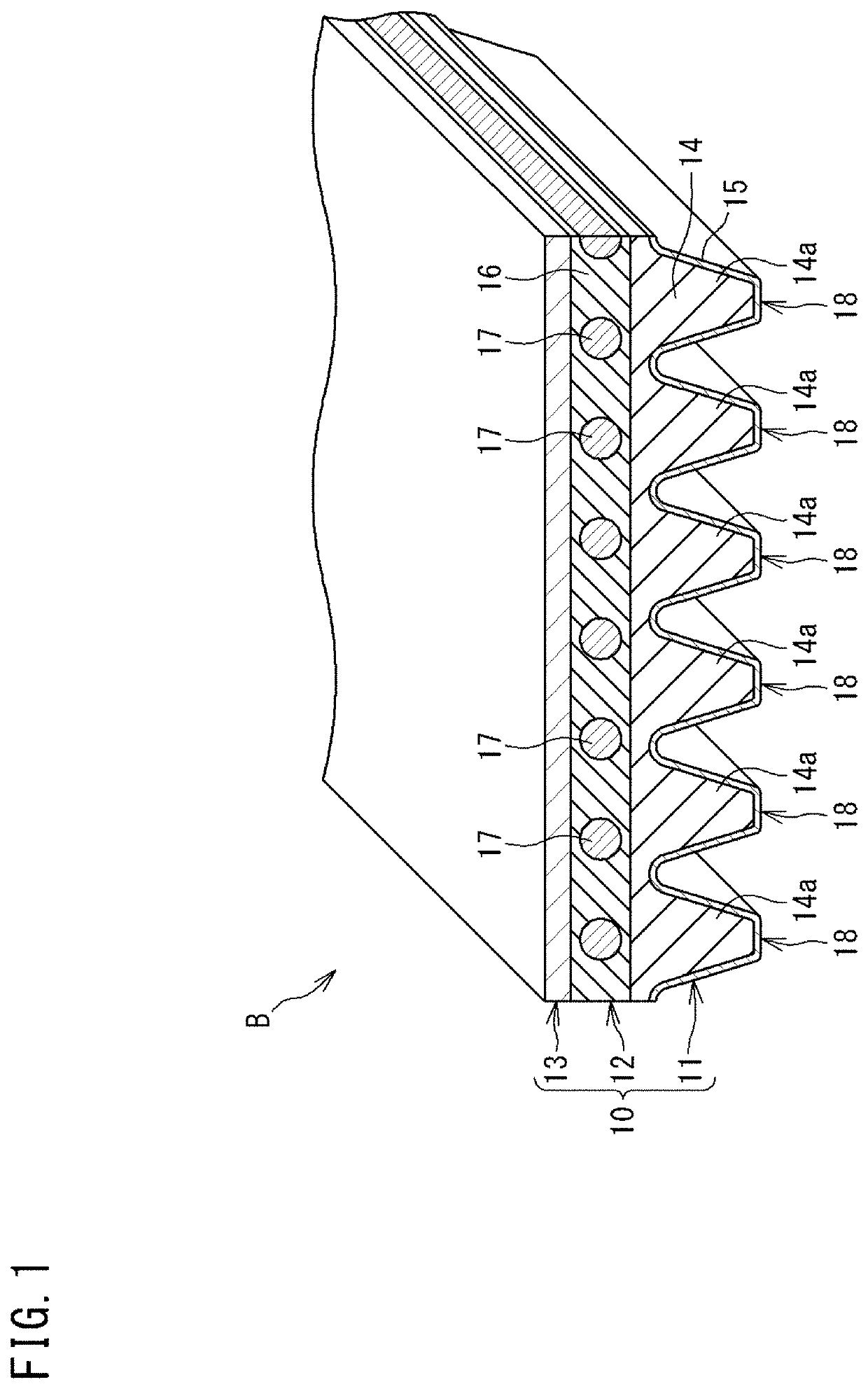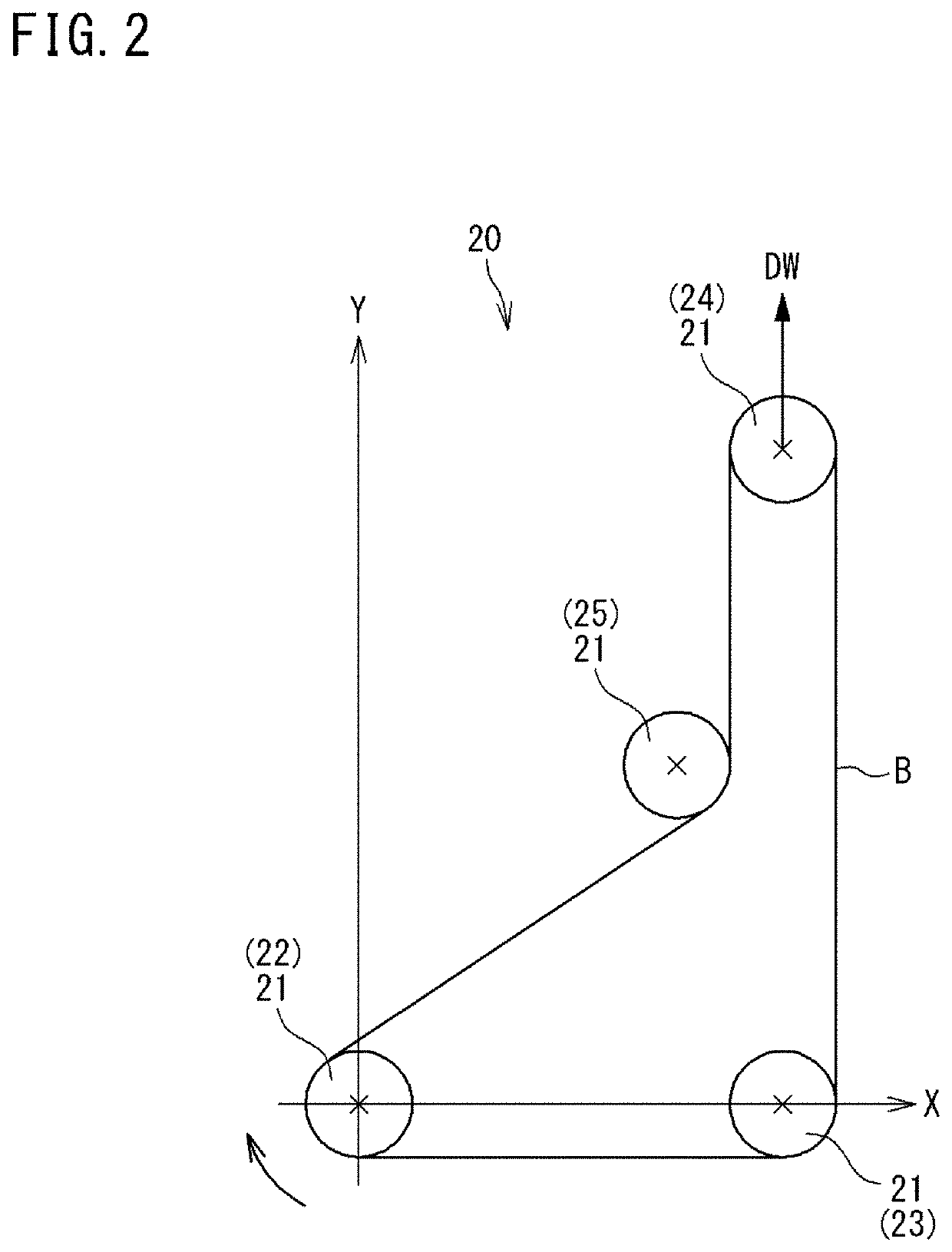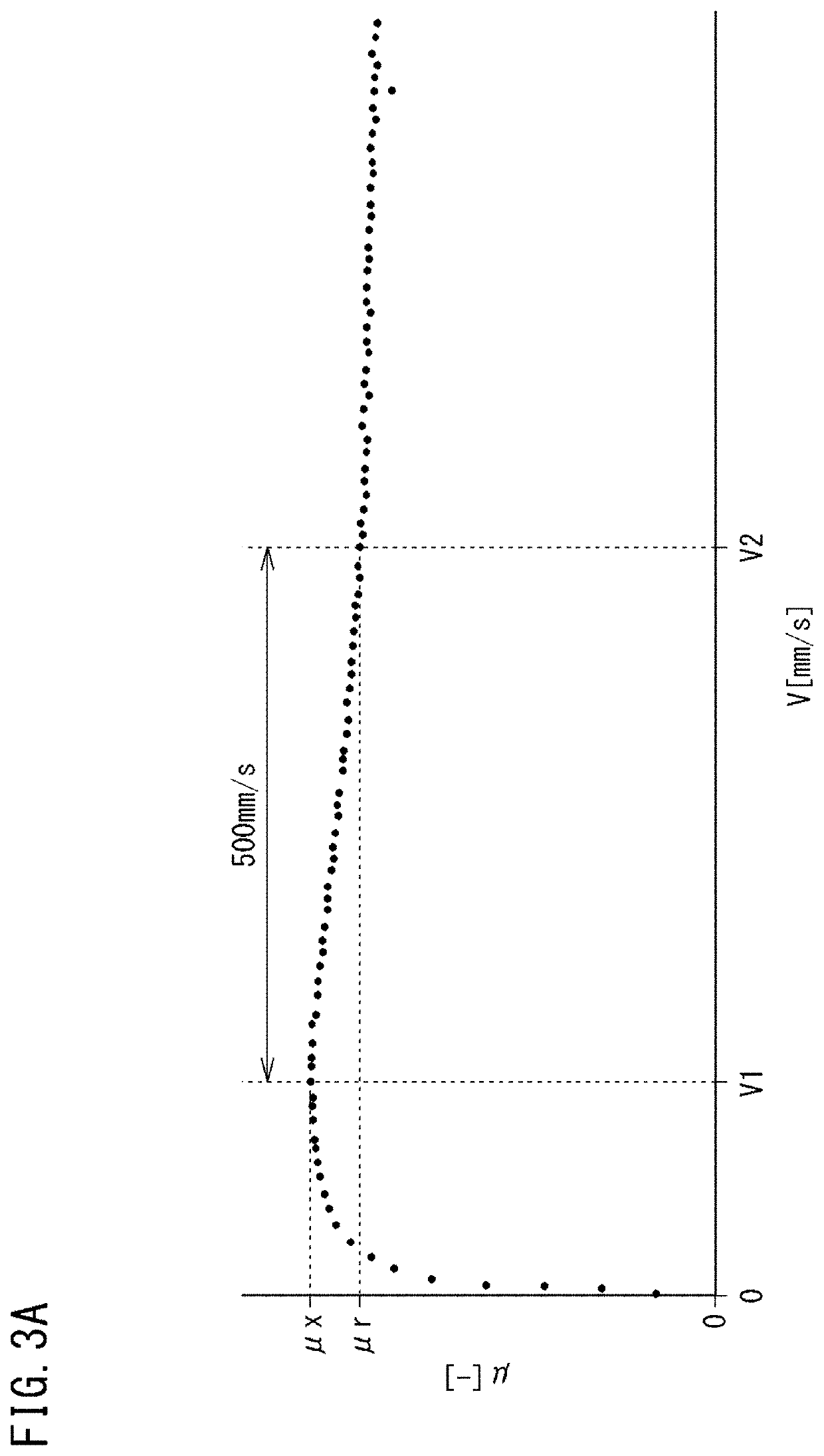Friction transmission belt
a transmission belt and friction technology, applied in the direction of layered products, mechanical equipment, chemistry equipment and processes, etc., can solve the problems of abnormal sound generation and slip sound, and achieve the effect of reducing the abnormal sound generated during water exposur
- Summary
- Abstract
- Description
- Claims
- Application Information
AI Technical Summary
Benefits of technology
Problems solved by technology
Method used
Image
Examples
example 1
[0139]A V-ribbed belt that has the same configuration as described above in the embodiment and in which the knitted fabric A was used as a fiber member layer and the above-described ones were used as a compression rubber layer body material, an adhesive rubber layer body material, a core wire, and a backface reinforcing fabric, was produced by the manufacturing method described with reference to FIG. 5A to FIG. 6C, and was regarded as a V-ribbed belt of Example 1.
[0140]In Example 1, the stretching ratio of the fiber member layer was set to 180%, and the molding pressure was set to 0.7 MPa. The void ratio of the surface layer portion of the compression rubber layer was 38%.
example 5
[0143]A V-ribbed belt of Example 5 was produced in the same manner as Example 1, except that the knitted fabric B was used for the fiber member layer and the stretching ratio and the molding pressure were set as shown in Table 2 below.
[0144]In Example 5, the void ratio of the surface layer portion was 22%.
example 6
[0145]A V-ribbed belt of Example 6 was produced in the same manner as Example 1, except that the knitted fabric C was used for the fiber member layer and the stretching ratio and the molding pressure were set as shown in Table 2 below.
[0146]In Example 6, the void ratio of the surface layer portion was 20%.
[0147]Using the belt running tester 20 shown in FIG. 2, the relationship between a slipping speed and a friction coefficient was obtained for Examples 1 to 6 and Comparative Example 1 according to the above-described evaluation method, and the decrease rate Dm of the friction coefficient indicated by the above-described equation (1) was obtained. Furthermore, the zone from the first slipping speed V1 to the second slipping speed V2 was equally divided into five sections, and the decrease rate Dsm of the friction coefficient indicated by the above-described equation (2), that is, the decrease rates Ds1, Ds2, Ds3, Ds4, and Ds5, were obtained for the respective sections. The results a...
PUM
 Login to View More
Login to View More Abstract
Description
Claims
Application Information
 Login to View More
Login to View More - R&D
- Intellectual Property
- Life Sciences
- Materials
- Tech Scout
- Unparalleled Data Quality
- Higher Quality Content
- 60% Fewer Hallucinations
Browse by: Latest US Patents, China's latest patents, Technical Efficacy Thesaurus, Application Domain, Technology Topic, Popular Technical Reports.
© 2025 PatSnap. All rights reserved.Legal|Privacy policy|Modern Slavery Act Transparency Statement|Sitemap|About US| Contact US: help@patsnap.com



